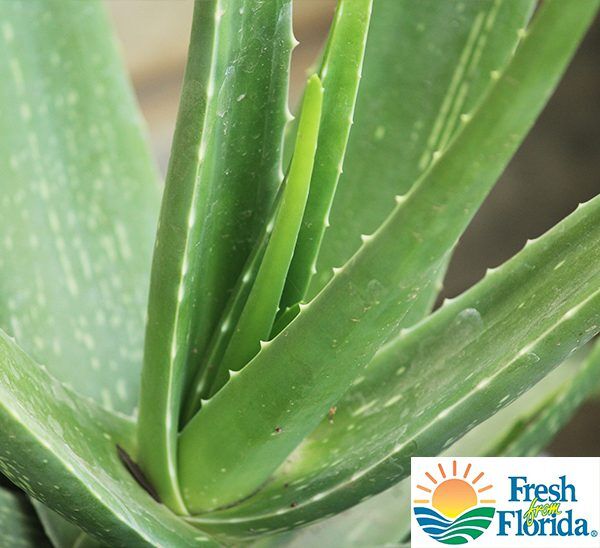Aloe Vera
Aloe Vera
$9.99
An attractive plant in the garden, and also widely used in commercial trade as an ointment or herbal remedy; produces racemes of dainty flowers in summer; a wonderful garden or container accent.
How to Care for Aloe Vera
Sunlight: Aloe Vera thrives in bright, indirect sunlight. It can tolerate some direct sunlight but may develop brown spots if exposed to intense, prolonged sunlight. A sunny windowsill or a spot with filtered light is ideal.
Soil: Plant Aloe Vera in well-draining soil, such as a cactus or succulent mix. You can also create your own by mixing regular potting soil with sand or perlite. A slightly acidic to neutral pH of 6.0-7.0 is best.
Water: Aloe Vera prefers dry conditions and should be watered sparingly. Allow the soil to dry out completely between waterings. Overwatering can lead to root rot. In the winter, reduce watering to once a month or less.
Fertilizer: Aloe Vera requires minimal fertilization. Feed it once in the spring and again in mid-summer with a balanced, water-soluble fertilizer diluted to half strength. Avoid over-fertilizing, as it can harm the plant.
Pruning: Pruning Aloe Vera is simple. Remove dead, yellow, or damaged leaves at the base with clean, sharp scissors. You can also harvest mature outer leaves for their gel as needed.
Pests and Diseases: Aloe Vera is generally pest-resistant but may occasionally attract mealybugs, aphids, or spider mites. Treat infestations with insecticidal soap or neem oil. Ensure good drainage to prevent root rot or fungal issues.
Winter Hardiness: Aloe Vera is frost-sensitive and thrives in USDA zones 9-11. In colder climates, grow it indoors or as a container plant that can be brought inside when temperatures drop below 50°F (10°C). Place it in a warm, bright location during the winter months.
Items For Added Success
Species: vera
Other Species Names: Chinese Aloe, Indian Aloe, Yes Aloe
Plant Height: 24 in.
Spread: 24 in.
Evergreen: Yes
Plant Form: upright spreading
Emergent Foliage Color: light green
Summer Foliage Color: sea green
Minimum Sunlight: full sun
Maximum Sunlight: full sun
Aloe Vera's attractive succulent sword-like leaves emerge light green in spring, turning bluish-green in color the rest of the year. It features dainty racemes of yellow tubular flowers rising above the foliage in mid summer. The fruit is not ornamentally significant.
Aloe Vera is an herbaceous evergreen perennial with an upright spreading habit of growth. Its wonderfully bold, coarse texture can be very effective in a balanced garden composition.This is a relatively low maintenance plant, and usually looks its best without pruning, although it will tolerate pruning. Deer don't particularly care for this plant and will usually leave it alone in favor of tastier treats. Gardeners should be aware of the following characteristic(s) that may warrant special consideration; Spiny Aloe Vera is recommended for the following landscape applications; Mass Planting, Rock/Alpine Gardens, General Garden Use, Container Planting
Aloe Vera will grow to be about 24 inches tall at maturity extending to 3 feet tall with the flowers, with a spread of 24 inches. It grows at a slow rate, and under ideal conditions can be expected to live for 40 years or more.This plant should only be grown in full sunlight. It prefers dry to average moisture levels with very well-drained soil, and will often die in standing water. It is considered to be drought-tolerant, and thus makes an ideal choice for a low-water garden or xeriscape application. It is not particular as to soil pH, but grows best in sandy soils. It is somewhat tolerant of urban pollution. This species is not originally from North America. It can be propagated by division.Aloe Vera is a fine choice for the garden, but it is also a good selection for planting in outdoor pots and containers. With its upright habit of growth, it is best suited for use as a 'thriller' in the 'spiller-thriller-filler' container combination; plant it near the center of the pot, surrounded by smaller plants and those that spill over the edges. Note that when growing plants in outdoor containers and baskets, they may require more frequent waterings than they would in the yard or garden.

